Aptly named due to the shape of its leaves, the Angel Wing Begonia has been a firm favorite both in the garden and the home for many years. As versatile as it is unique, the Angel Wing Begonia can thrive as a petite indoor potted plant or a large outdoor shrub, and it will fit in any space with the right pruning.
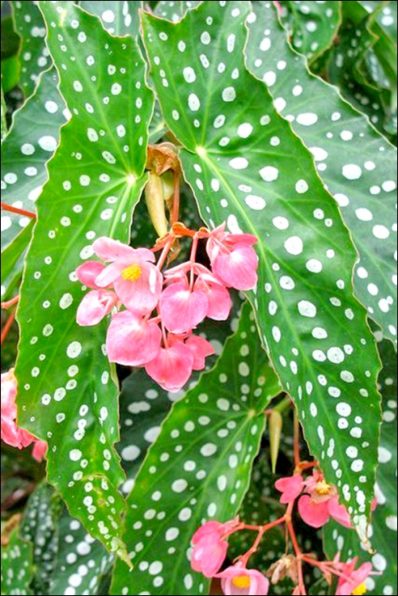
Originating in South America, the Angel Wing Begonia (begonia coccinea x begonia aconitifolia) is a perennial member of the Begoniaceae family. With its delicate flowers and distinctive spotted leaves, it is guaranteed to add a quirky, feminine touch to any garden or home.
The Angel Wing Begonia thrives in bright but indirect light, high humidity and easily draining soil, and is incredibly easy to propagate. Let’s take a whistle stop tour of this charming must-have addition to any foliage display.
What Does an Angel Wing Begonia Look Like?
The Angel Wing Begonia produces beautiful, pendant-like flowers in a range of colors; some of the most common being pink, orange and red. These intricately layered waxy flowers hang from the plant to form a magnificent draping display.
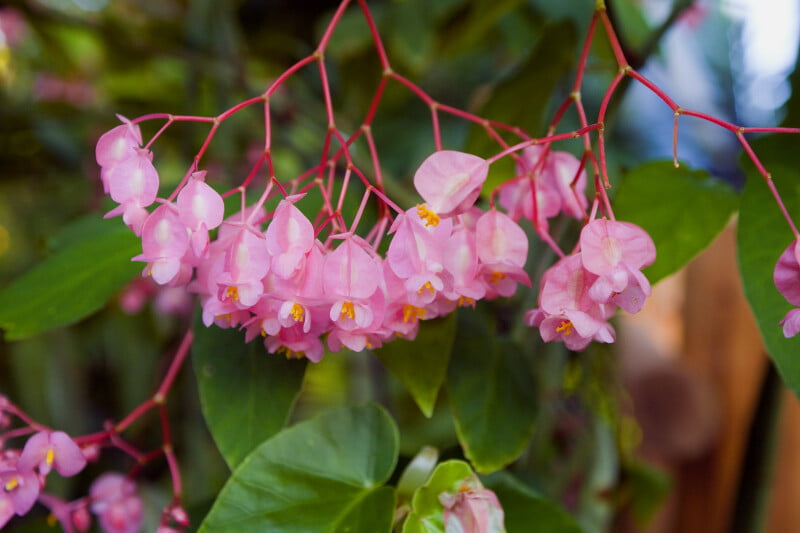
But this unique plant is most famed for its glossy ‘angel wing’ shaped leaves that protrude from its cane-like stem. Some varieties of Angel Wing Begonia feature leaves with a striking red outer edge or underside, and they are often patterned with characterful spots or other intricate and highly individual patterns. The Angel Wing Begonia certainly comes with bags of personality.
Different Varieties of Begonia
Cane Begonias
The Angel Wing Begonia falls into this more traditional category of Begonia plants. Cane Begonias can have fairly visible stems; however, this is less common in more modern varieties. This type of Begonia is typically evergreen, flowers during fall or winter and is versatile enough to be a great all-year-round house plant or a perfect (if a little wild) addition to your garden. The Dragon Wing Begonia is another member of the Cane Begonia family, it is very similar to the Angel Wing Begonia in terms of both care and appearance.

Tuberous Begonias
Tuberous Begonias tend to be outdoor plants and feature spectacularly large and brightly-colored flowers that can easily last for the whole summer. Once flowering is over, the Tuberous Begonia usually enter dormancy, unlike their cane-type counterparts.
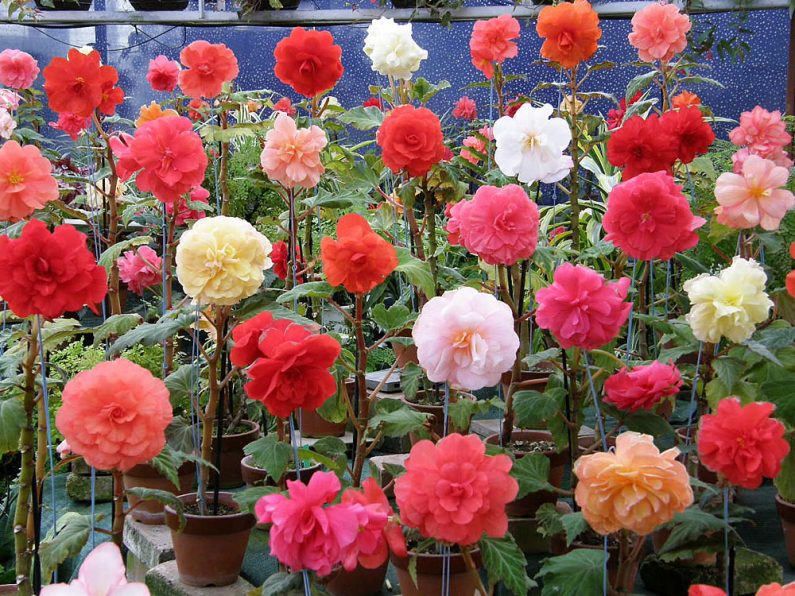
Rhizomatous Begona
This variety of Begonia is a little more modest than the cane and tuberous types. With humbler flowers and heavier foliage, these evergreen Begonias are a great option if you like quirkily patterned leaves that take centre stage all year round.
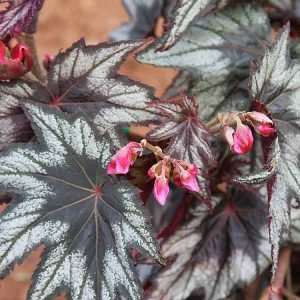
How Big Does the Angel Wing Begonia Grow?
The Angel Wing Begonia can easily grow up to four feet or more if left unpruned, however it is not generally recommended to let them grow to this height without regularly cutting off old stems and trimming down newer ones. The Angel Wing Begonia responds really well to pruning, and will likely flourish if kept slightly smaller and more ‘rounded’.
How to Care for an Angel Wing Begonia
The Angel Wing Begonia is fairly low maintenance and suitable for experienced gardeners and newbie enthusiasts alike! As long as you take care not to overwater your plant or position it in harsh, direct sunlight, the Angel Wing Begonia will likely do just fine in your garden or home, although it does prefer areas with higher humidity levels.
Water
During summer, the Angel Wing Begonia likes regular watering, so try to keep the topsoil slightly moist at all times. Be sure not to get the leaves damp in the process, though, as this can lead to fungal diseases like stem rot or powdery mildew.
In the winter (or if you are keeping your Angel Wing Begonia as a houseplant) you can allow the soil to dry out before watering. It’s also well worth noting that this plant loves living in areas with high levels of humidity.
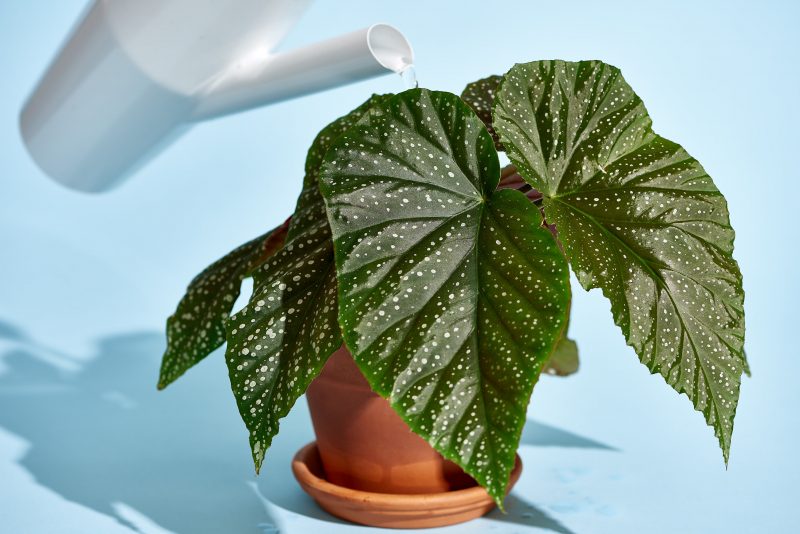
Soil
The Angel Wing Begonia prefers a light and airy, fast-draining soil. Efficient drainage is key in preventing diseases like root rot, which can occur when the plant is overwatered without giving the soil a chance to dry out sufficiently.
Light
Though it does prefer to be kept out of direct sunlight, the Angel Wing Begonia does like the opportunity to soak up plenty of brightness. The ideal position for this plant is somewhere with partial shade or that offers indirect light; ensuring your Angel Wing Begonia gets sufficient exposure is vital for the production of flowers. During the winter months, it will be able to handle a little more direct sunlight, so positioning it somewhere where it can benefit from the morning light, but become shaded by midday would be ideal.

Fertilizer
Fertilizer is beneficial between spring and fall. Feed your Angel Wing Begonia approximately every two weeks using a high potassium diluted feed at a half strength to keep it looking its glossy and vibrant best all year round. If your Angel Wing Begonia is blooming in spring or late winter, switch over to a high-phosphorous fertilizer for the best results.
How to Propagate an Angel Wing Begonia
One of the greatest benefits of the Angel Wing Begonia plant is that it is incredibly easy to take cuttings for propagation. Simply snip off three to six inches of a leaf tip and plant it up into potting soil. Ensure your cutting contains at least one node, however it should not contain any flowers.

Once planted, make sure to keep the cutting moist and warm in either water or perlite until signs of growth appear. For an extra chance of success, you could use a rooting hormone, however this is not usually a necessity. Once you notice roots forming, your cutting can be transferred into soil.
Angel Wing Begonias can be grown from seed, however there is never any guarantee of what color or variety of plant you will end up with, and this process is often much more difficult than using a cutting.

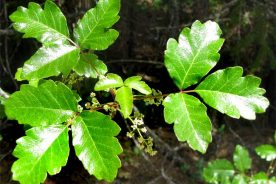
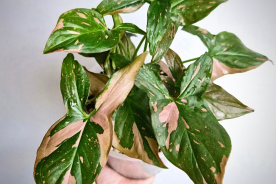
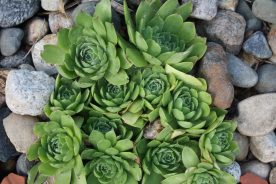

No Comments